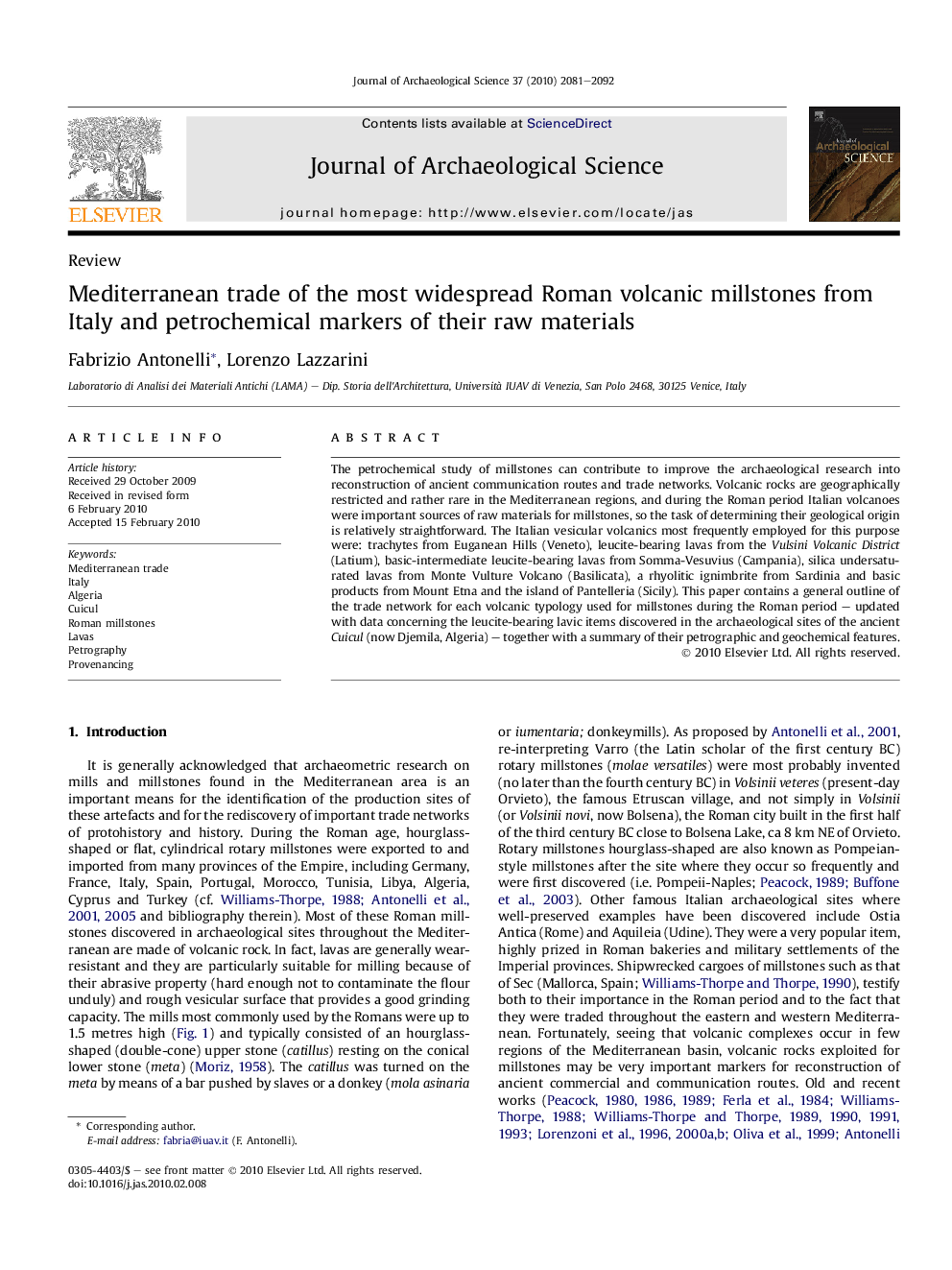| Article ID | Journal | Published Year | Pages | File Type |
|---|---|---|---|---|
| 1036627 | Journal of Archaeological Science | 2010 | 12 Pages |
The petrochemical study of millstones can contribute to improve the archaeological research into reconstruction of ancient communication routes and trade networks. Volcanic rocks are geographically restricted and rather rare in the Mediterranean regions, and during the Roman period Italian volcanoes were important sources of raw materials for millstones, so the task of determining their geological origin is relatively straightforward. The Italian vesicular volcanics most frequently employed for this purpose were: trachytes from Euganean Hills (Veneto), leucite-bearing lavas from the Vulsini Volcanic District (Latium), basic-intermediate leucite-bearing lavas from Somma-Vesuvius (Campania), silica undersaturated lavas from Monte Vulture Volcano (Basilicata), a rhyolitic ignimbrite from Sardinia and basic products from Mount Etna and the island of Pantelleria (Sicily). This paper contains a general outline of the trade network for each volcanic typology used for millstones during the Roman period – updated with data concerning the leucite-bearing lavic items discovered in the archaeological sites of the ancient Cuicul (now Djemila, Algeria) – together with a summary of their petrographic and geochemical features.
